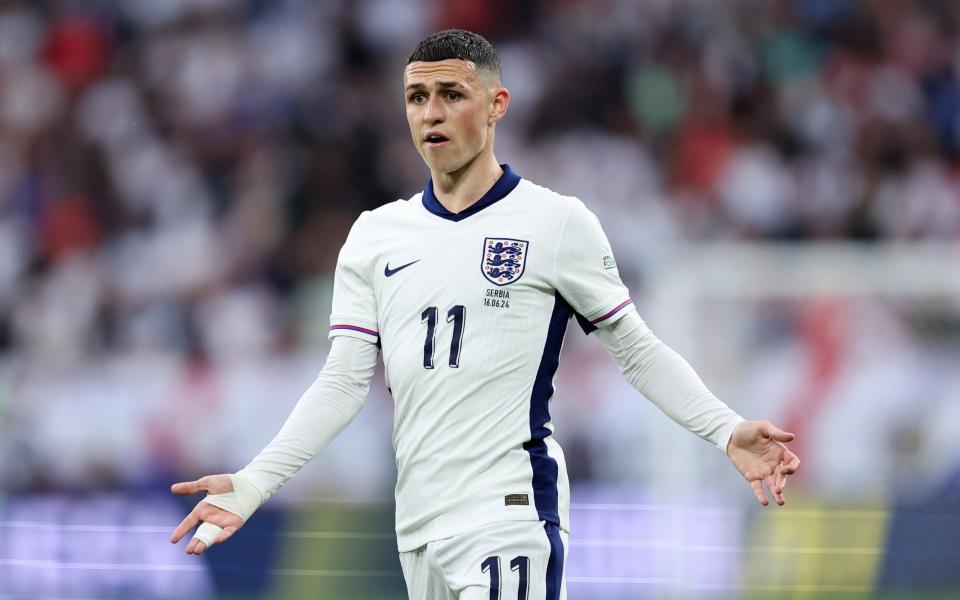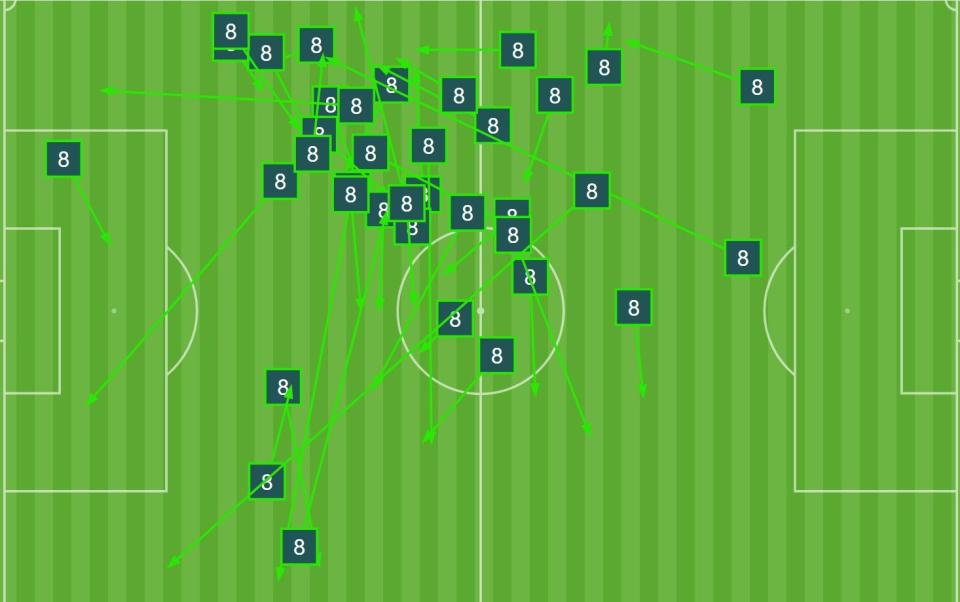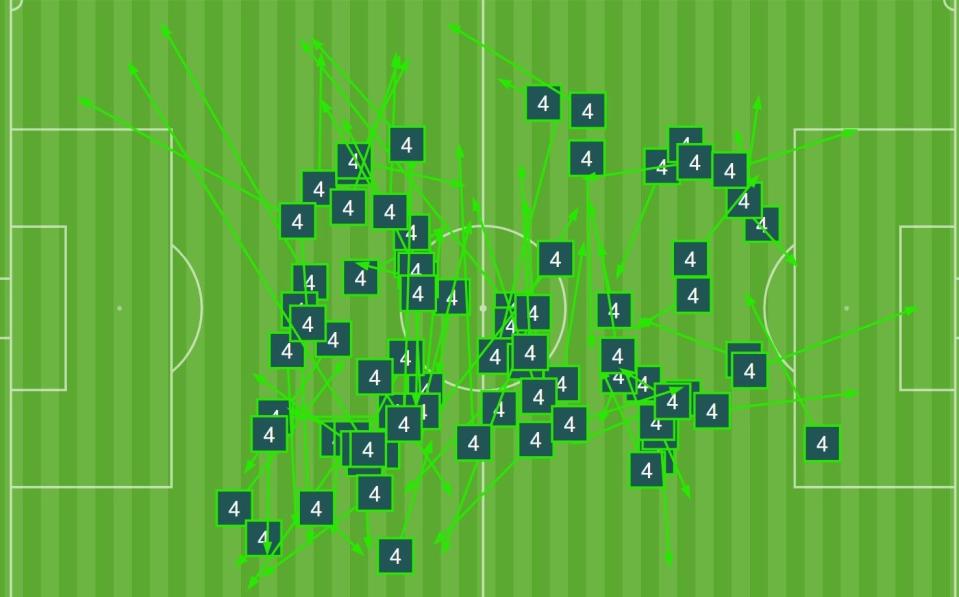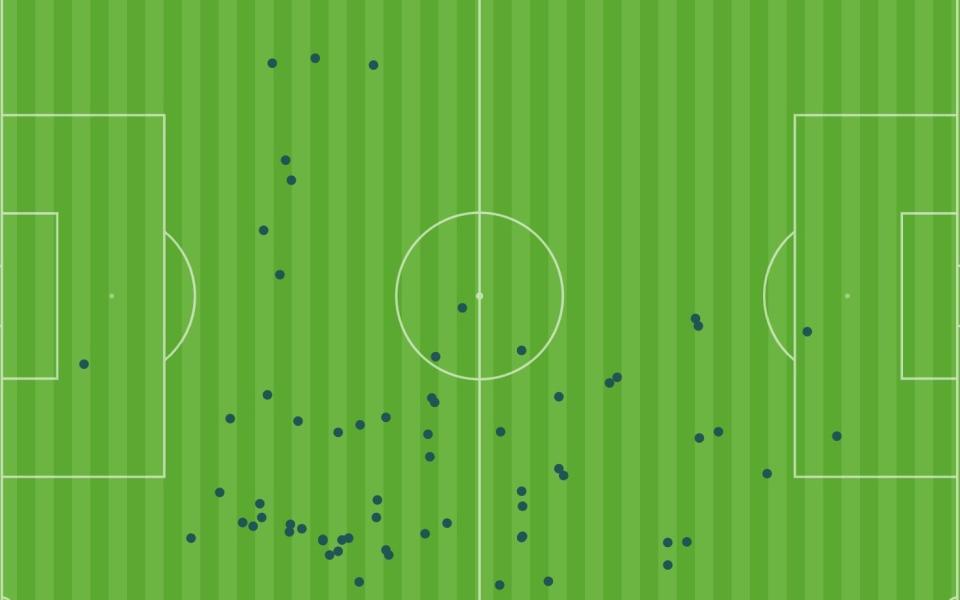Why the Man City version of Phil Foden is not seen for England

Phil Foden was a peripheral figure in England’s Euro 2024 victory over Serbia, fresh off a domestic campaign in which he was crowned Footballer of the Year.
Foden produced 19 Premier League goals and eight assists in another title-winning season with Manchester City, prompting calls for England’s team to be shaped to suit his abundant talents.
It is perhaps a mark of England’s progress as a tournament team that the traditional summer ‘clamour’ no longer focuses on a player out of the team, but on a starter’s precise tactical role.
For some, England will not win this tournament unless they unlock the Foden we see every week at City. In 35 England appearances, 24 of which have been starts, Foden has scored just four goals and provided eight assists.
The counter-argument is that so long as the team functions well, creates chances and scores goals, it does not matter which player receives the adulation. Foden is yet to find his niche in an England shirt though, and these are some of the reasons a prodigiously talented footballer finds himself slightly marginalised.
The Manchester City effect
Why might Foden look better for Man City than for England? To a certain extent the question answers itself. At City, Foden is surrounded by world-class players in a winning machine who have been training together for years. They are also organised by probably the best coach of his generation in Pep Guardiola. City enjoy a degree of dominance and control that will always prove beyond England, or almost any international team.
It is simply not possible for a national side to have every player thriving in their club role, and it is not advisable for a manager to aspire towards this. Squad dynamics and team balance are different. At City, Foden plays behind a striker in Erling Haaland who drives defences back. With England, Foden plays behind a striker in Harry Kane who drops short to receive the ball (though as Jamie Carragher wrote on these pages, he played more like Haaland against Serbia). Foden also has Jude Bellingham to contend with at England level. Last season, an opportunity arose in a more central position because of an injury to Kevin De Bruyne.
In Southgate’s defence, Foden has played more games for City in a wide role than as one of Guardiola’s two No 8s. With the exception of the occasional switch to a 4-2-3-1, City do not operate with a No 10. They typically attack with a front five, with two wingers either side of a centre-forward and two players in half-spaces in between. Foden can play in all five lanes.
England’s right-side bias vs Serbia
After England’s next two group games, we should be able to surmise whether their right-sided bias was a Serbia-specific tactic or a feature of the team.
England’s most dangerous attacks against Serbia during an encouraging first 30 minutes came down their right flank, with Bukayo Saka crossing for Bellingham to create the game’s only goal. Perhaps it should not be a surprise that England leaned right. Their best ball-playing defender is the right-sided John Stones and their best midfield passer is the right-sided Trent Alexander-Arnold. Though his passes featured a couple of switches of play to the left, Alexander-Arnold operated in very right-back-like positions, dropping outside of Serbia’s shape.

Declan Rice, at the base of England’s midfield, is also more comfortable spreading play to the right with the inside of his stronger foot. His more searching, longer-range passing against Serbia was to the right flank. England are without the natural width of specialist left-back Luke Shaw.

Serbia’s left wing-back Filip Kostic is also an offensive player, so perhaps Southgate and his staff had a plan to target that side. The result was that Foden was less involved. Is this a problem? Some very successful teams have had a strong attacking bias to one flank or the other, and things could flip around against different opponents.
Foden was not ‘stuck out on the left’
Looking at Foden’s touch map against Serbia, it is easy to conclude that he was constrained by Southgate’s system and boxed-in by starting wide left. Foden enjoyed very few touches, almost none in fact, in the central attacking midfield position just outside the penalty box. Fans think of this as the No 10 position. In coaching speak, it is called Zone 14.

However, the plan was more nuanced. The early stages of a match are always the most revealing of a coaching team’s intentions, and Southgate clearly did not want Foden pinned to the touchline.
Within the first minute of the match, Foden moved into a more central position with Bellingham to his left on the outside. Midfield rotations were a feature of England’s first half.
In the next minute, Foden drifted all the way over to the right to play in close proximity to Bellingham, Alexander-Arnold and Saka. Foden was not tasked with holding his width, he was granted the freedom to drift. England are less focused on positional play than City. If anything, Foden may have seen more of the ball had he stayed wider.
Nor was Bellingham always blocking Foden’s path. In this attack, Bellingham has dropped outside Serbia’s defensive block with Foden moving into the sea of red shirts.
Despite playing on his weaker left foot, Kieran Trippier was pushed on by Southgate, allowing Foden to move into central areas like in this 12th-minute move.
There were plenty of other examples to choose from. If Foden has grounds for complaint, it is that the ball did not arrive at his feet in these dangerous positions.
As BBC Sport pundit Cesc Fabregas said post-match though, Foden also has to take some responsibility for his England performances and start to demand the ball. Especially if Southgate is allowing him freedom to move.
“When they started to get pressed a little bit more, we started to see Foden hitting the ball without looking 40 yards. Trent, this is not like them,” Fabregas said. “And I think players like Foden, they need to step up. This is the time for them to go into a big tournament with their country behind them.”
The technical difficulty of Foden playing left
Like many left-footed players in the modern game, if Foden was given the choice he would prefer to operate on the right half of the pitch.
Foden’s biggest strength, and the skill that separates him from so many English footballers, is his ability to receive on the half-turn and control the ball with his back foot.
When Foden is on the right side of the pitch, his back foot is generally his weaker right. Another way of putting it is that his weaker foot is closer to the opposition’s goal. This means he can control and shift the ball to his stronger foot, shooting or dribbling away from pressure.
The opposite tends to be true when Foden is on the left: his stronger left foot becomes his back foot and the one closest to the goal. Foden is well capable of course, but it is difficult to control the ball with your back foot and then play forward with the same foot especially with a goal-side defender.
This chance, created by Bellingham, demonstrates the difficulty. Foden has to try to control the ball with his left foot before executing a complete spin and finish, Dennis Bergkamp-style, but the ball runs under his foot. Not impossible, but a lower-percentage option.
Were he on the right side of the penalty area, a touch on his right foot before curling a shot with his left would have been an easier skill. Foden’s shot map in the Premier League last season shows almost no shots in the zone this chance occurred. Foden’s shots came from centre or centre-right.
In this example, Foden has controlled the ball with his stronger left foot again, with Bellingham showing for the ball inside with his arm outstretched.
Foden ends up knocking the ball backwards with his right foot. Were the situation mirrored on the other side of the pitch, it is a good bet that Foden would have controlled the ball with his right and punched a pass to Bellingham with his left.

 Yahoo Sport
Yahoo Sport 





































